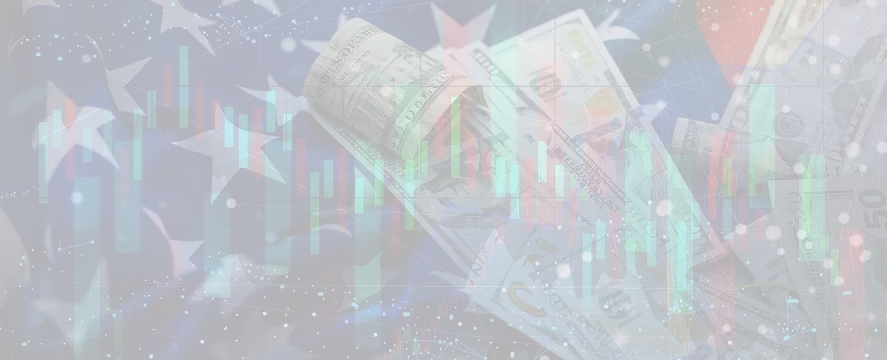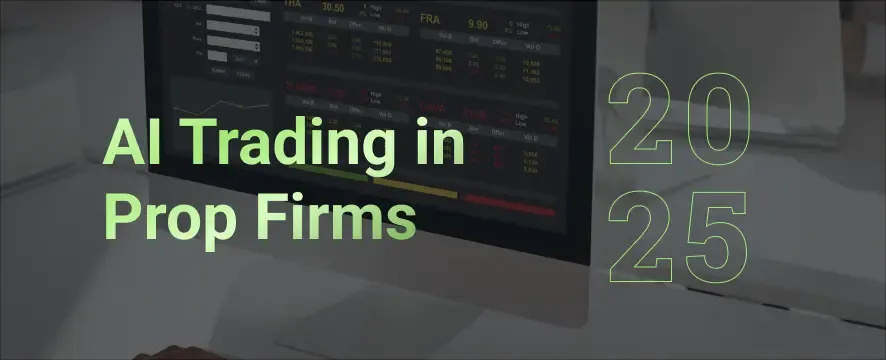
13 min read
How to Be a Funded Trader in 2025
To become a funded trader in 2025, you must pass prop firm challenges by mastering strategy, risk control, and trading rules.
8 min read
Share
What is forex news trading, and how can you use it to effectively trade the forex market?

The forex market is an intricate web where different currencies interact, and many ‘moving parts’ work together to contribute to price action. Among the top drivers of price action is news.
So, what exactly is news trading, and how do forex traders use it to make money?
Forex news trading involves making strategic trading decisions based on economic data releases, geopolitical events, and other market-moving news in the foreign exchange market.
While technical analysis leads traders to scrutinize chart patterns, news traders are more focused on the underlying fundamentals and factors influencing currency prices, rather than charts and data alone.
The forex market is the world’s largest financial marketplace, with a daily trading volume exceeding $6 trillion. Forex markets operate globally without physical locations, creating a unique trading environment.
Unlike stock markets that operate during set business hours, the currency market runs 24 hours a day, five days a week, creating endless opportunities for participants worldwide.
Currency pairs form the backbone of forex trading. Major pairs like EUR/USD (Euro/US Dollar) and USD/JPY (US Dollar/Japanese Yen) typically offer tighter spreads and more liquidity, making them ideal for news trading – especially when volatility spikes.
The Forex market functions by matching buyers and sellers of different currencies through a sophisticated network of banks, brokers, and other financial institutions.
The exchange rate, which is the price at which one currency can be exchanged for another, is determined by the forces of supply and demand in the market. These rates are influenced by a myriad of economic and political factors.
For instance, a country’s economic performance, interest rates, and political stability can all impact the demand for its currency, thereby affecting its exchange rate.
In the Forex market, currencies are traded in pairs, known as currency pairs. A currency pair consists of two currencies that are traded against each other.
Each currency pair is quoted in terms of the base currency and the quote currency. The base currency is the first currency in the pair, while the quote currency is the second. For example, in the EUR/USD pair, the Euro is the base currency, and the US Dollar is the quote currency.
An exchange rate is the price of one currency in terms of another currency. It represents the rate at which one currency can be exchanged for another in the forex market.
For traders, understanding exchange rates is crucial as it helps them make informed decisions about when to buy or sell a currency pair.
Several factors influence exchange rates, including economic indicators, central bank announcements, and geopolitical events. Economic indicators such as GDP growth rate, inflation rate, and unemployment rate can affect the exchange rate by influencing the demand for a currency.
A higher GDP growth rate may increase demand for a country’s currency, leading to an appreciation in its value. Likewise, central bank announcements, such as interest rate decisions, can also impact exchange rates by affecting the supply of a currency.
For example, an interest rate hike by a central bank can attract foreign investment, increasing demand for that currency. Geopolitical events, such as elections and trade wars, can also influence exchange rates by affecting investor sentiment and demand for a currency.
Economic indicators serve as vital ‘signposts’ for the value of currencies. Think of economic indicators as a regular health assessment for national economies - they reveal critical information about economic strength or weakness that directly impacts the nation’s currency price.
Forex news traders closely monitor these indicators to make informed trading decisions.
Key economic indicators include:
When actual figures deviate from market expectations, currencies can move dramatically in a short space of time.
Meanwhile, a stronger-than-expected US jobs report might send the dollar soaring against other currencies, while disappointing growth numbers could likewise trigger a swift decline.
Central banks exercise significant influence on currency values through their monetary policy decisions. The Federal Reserve, European Central Bank, Bank of Japan, and others wield enormous influence through interest rate changes and policy statements.
These announcements can lead to significant movements in forex trades as traders react to new information. Even a subtle shift in language can send shockwaves through the forex market.
When a central bank hints at future rate hikes, traders often bid up that currency in anticipation. Conversely, signals of economic stimulus or rate cuts typically weaken a currency as investors seek higher yields elsewhere.
News trading differs substantially from other approaches. While day traders might hold positions for hours or minutes, swing traders for days or weeks, news traders may execute lightning-fast trades around specific economic releases.
A well-defined trading strategy is essential for news traders to navigate market volatility. Or, news traders will speculate on what news (such as central bank decisions) may be announced and try to preempt a move.
New trading boils down to a simple concept: When news hits the market, prices adjust rapidly to incorporate this new information. Skilled news traders seek to position themselves to capture these movements by:
Market sentiment is what drives short-term currency fluctuations, especially during news releases - which usually include economic data. Understanding these dynamics is crucial for anyone interested in trading currencies.
When traders collectively react to new data, the subsequent price movements can resemble a powerful, fast, and potentially dangerous move – especially for those who aren’t prepared.
International trade agreements, bond markets, and overall geopolitical stability also influence exchange rates, albeit usually over longer periods.
Moreover, a country with rising exports typically sees currency appreciation, while political instability often triggers depreciation as investors seek safer alternatives elsewhere.
For beginners, practice makes perfect. Practice trading with a demo account is crucial for beginners to understand market dynamics. Consider starting with a demo account that simulates real market conditions without risking actual capital. This allows you to test strategies and experience actual market reactions to major news without any financial consequences.
It’s advisable to start by focusing on one or two major currency pairs and focus on just a couple of economic indicators. This approach helps beginners start trading with a manageable scope. The EUR/USD pair is a great starting point as it offers excellent liquidity and responds to both European and American economic data.
News trading involves heightened risk due to increased market volatility surrounding changes in economic data or other fundamental factors. Effective risk management is essential for trading forex successfully.
As with any strategy, it’s never advisable to risk more than 1-2% per trade, especially when there can easily be a deviation in expected vs actual data.
The following are some sound risk management principles that can help mitigate your trading risk:
Use stop-loss orders to limit potential losses Reduce position sizes around news releases Avoid trading immediately before unpredictable announcements
News trading the forex market offers several distinct advantages, including the potential for substantial profits in short timeframes. Many traders are drawn to the potential to trade forex for substantial profits in short timeframes. Major economic releases can move currency pairs hundreds of pips in minutes, creating opportunities that simply don’t exist during quieter market periods.
However, this approach comes with significant challenges. Execution speed matters – even a few seconds’ delay can mean entering at much worse prices.
It goes without saying that paying close attention to the news, geopolitical circumstances, and monetary policy decisions is vital.
While technical analysis examines price patterns, fundamental analysis considers the economic factors driving currency values. Fundamental analysis is a key component of trading forex, as it helps traders understand the economic factors driving currency values. News traders blend these approaches, using technical levels to determine entry and exit points, while fundamental developments provide trading triggers.
Economic data releases serve as the most visible manifestation of fundamental factors. Interest rates, inflation, economic growth, and trade balances ultimately determine currency prices, making news trading a direct way to capitalize on these relationships when trading forex.
Forex news trading offers an exciting approach to the currency market for traders who thrive on fast-paced action and have strong analytical skills. To start trading forex, it is important to understand economic indicators and market psychology.
By understanding economic indicators, central bank communications, and market psychology, traders can potentially profit from the predictable volatility that follows major announcements.
Start small, practice consistently, and develop your own trading system based on objective analysis rather than emotions.
With proper risk management and realistic expectations, news trading can become a valuable component of your overall forex strategy – just don’t neglect charting altogether.

13 min read
To become a funded trader in 2025, you must pass prop firm challenges by mastering strategy, risk control, and trading rules.

9 min read
Discover effective AI trading strategies for prop firms to enhance your profits. Learn practical tips to navigate the market successfully. Read more!

8 min read
Instant funding prop firms are becoming increasingly popular, but should you participate?

10 min read
Learn effective strategies to successfully pass a prop firm challenge. Gain insights and tips to enhance your trading skills. Read the article now!

16 min read
Discover the essentials of proprietary trading and learn what a prop firm is. Understand the benefits and risks involved. Read the full guide now!
Get an insight from other users about SeacrestFunded and their experiences. 131K+ members and counting

Get instant access to weekly newsletter.